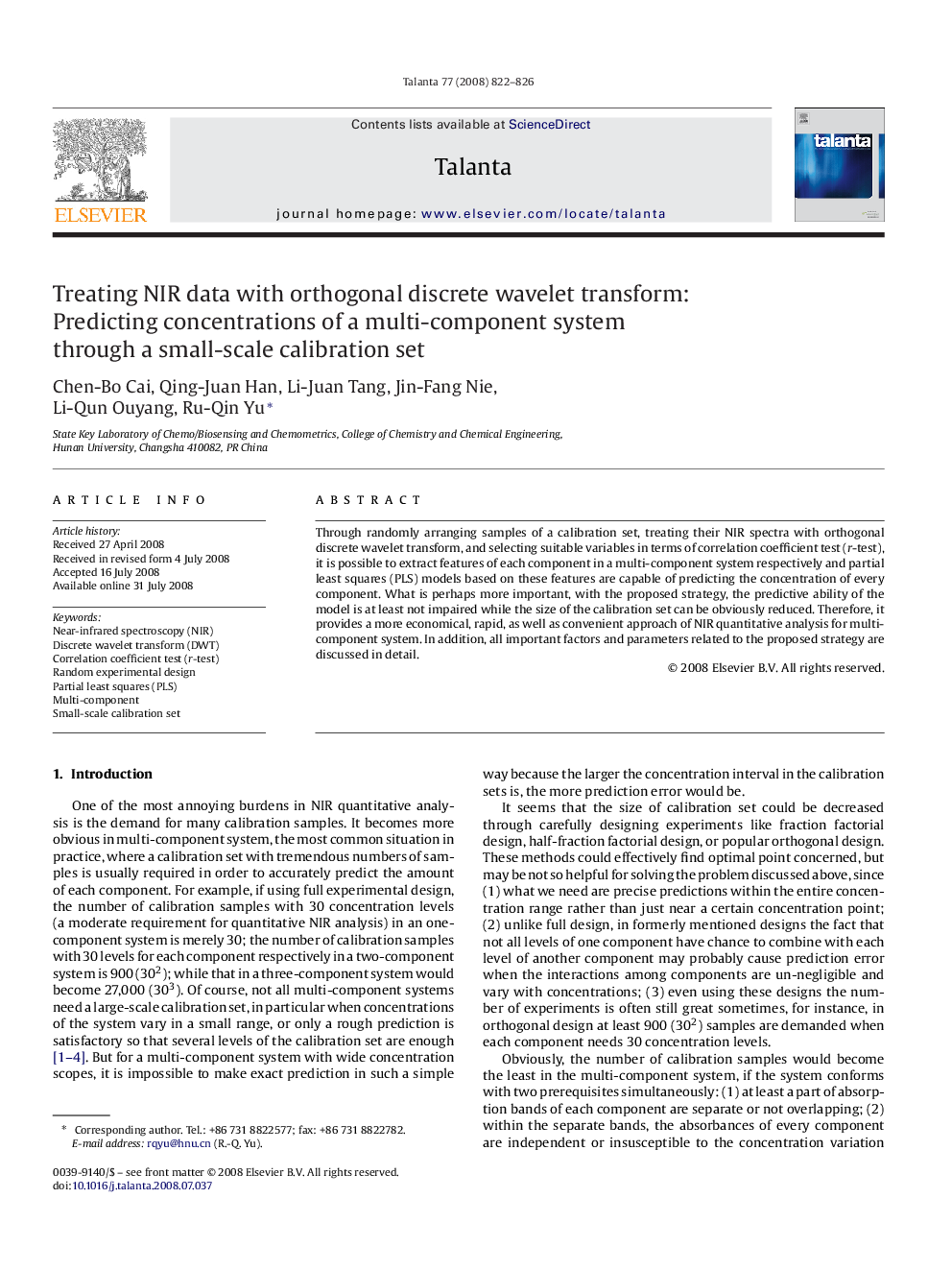| Article ID | Journal | Published Year | Pages | File Type |
|---|---|---|---|---|
| 1243142 | Talanta | 2008 | 5 Pages |
Abstract
Through randomly arranging samples of a calibration set, treating their NIR spectra with orthogonal discrete wavelet transform, and selecting suitable variables in terms of correlation coefficient test (r-test), it is possible to extract features of each component in a multi-component system respectively and partial least squares (PLS) models based on these features are capable of predicting the concentration of every component. What is perhaps more important, with the proposed strategy, the predictive ability of the model is at least not impaired while the size of the calibration set can be obviously reduced. Therefore, it provides a more economical, rapid, as well as convenient approach of NIR quantitative analysis for multi-component system. In addition, all important factors and parameters related to the proposed strategy are discussed in detail.
Keywords
Related Topics
Physical Sciences and Engineering
Chemistry
Analytical Chemistry
Authors
Chen-Bo Cai, Qing-Juan Han, Li-Juan Tang, Jin-Fang Nie, Li-Qun Ouyang, Ru-Qin Yu,
